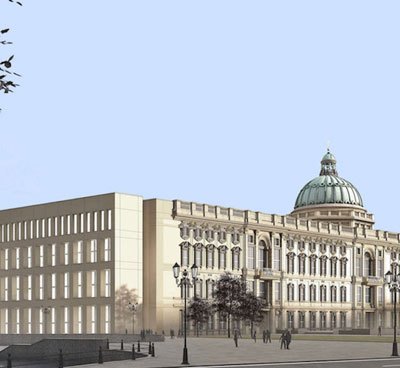On that isolated, unvisited, traffic island that is Parliament Square, 11 men are elevated upon plinths. Most of them have been there a long time. Now a woman is to join them. I had assumed, on a hurried first look at the reports, that suffragist Millicent Fawcett was to be portrayed as yet another Edwardian figure standing aloft on a lump of lettered stone, only this time female. But then I had a cup of coffee and looked again.
I had overlooked that Gillian Wearing was given the commission and immediately the picture changed. She shows Fawcett, faithfully enough, as a woman in an ankle-length dress (ornamented by a brooch cast from one she owned, a small note of added authenticity) and plainly dressed hair, cast in bronze. There is nothing, in that, to scare those easily made nervous by the conceptual. Yet she has succeeded in gently, and subtly, subverting the hushed genre of the honorific statue. Fawcett is holding a large placard (as do many of Wearing’s subjects, more usually in photographs). The words on it are those with which Fawcett marked Emily Davison’s tragic death at the Epsom Derby in 1913, her life lost for their common cause, votes for women; ‘Courage calls to Courage Everywhere.’ The scale and form of the message and the surface on which the words are freely lettered, translates the statue straight into our moment. It will be installed next year to mark the centenary of the Representation of the Peoples Act 1918, the legislation marking the first step on the journey towards the full franchise for women.
Millicent Fawcett. Wikimedia Commons

After the bathetic commemoration of animals in war at Brook Gate on Park Lane, the gigantic lumpen lovers (‘The Meeting Place’) that blight St Pancras station, or the over scaled and illiterate architectural setting of the Bomber Command Memorial by Green Park I have the lowest possible expectations of new commemorations. But Millicent Fawcett and Gillian Wearing are a winning combination, even if the plinth itself remains problematic, bearing a narrow band of photographs set into the masonry; the wrong medium in the wrong setting.
Parliament Square, with its thickening forest of effigies, isolated by the continual tide of traffic, not to mention security apparatus, needs serious attention as a suitable location for public statuary. In Trieste, the unrivalled European capital of commemorative statuary, innumerable worthies (though busts rather than full-length figures) are dotted around the city. You can go, from park to park, bench to bench, looking for Joyce, Svevo, or whomever you choose, and the town unfolds with them, as you go. The challenge for Mayor Sadiq Khan and the successful campaigners for Dame Millicent’s statue will be to persuade Westminster planners to set her off to best advantage, and to introduce us to her in the crowd of oddly assorted men already there. That calls for some quick and clever urban design. If not resolved, it could be the undoing of this worthy venture.



